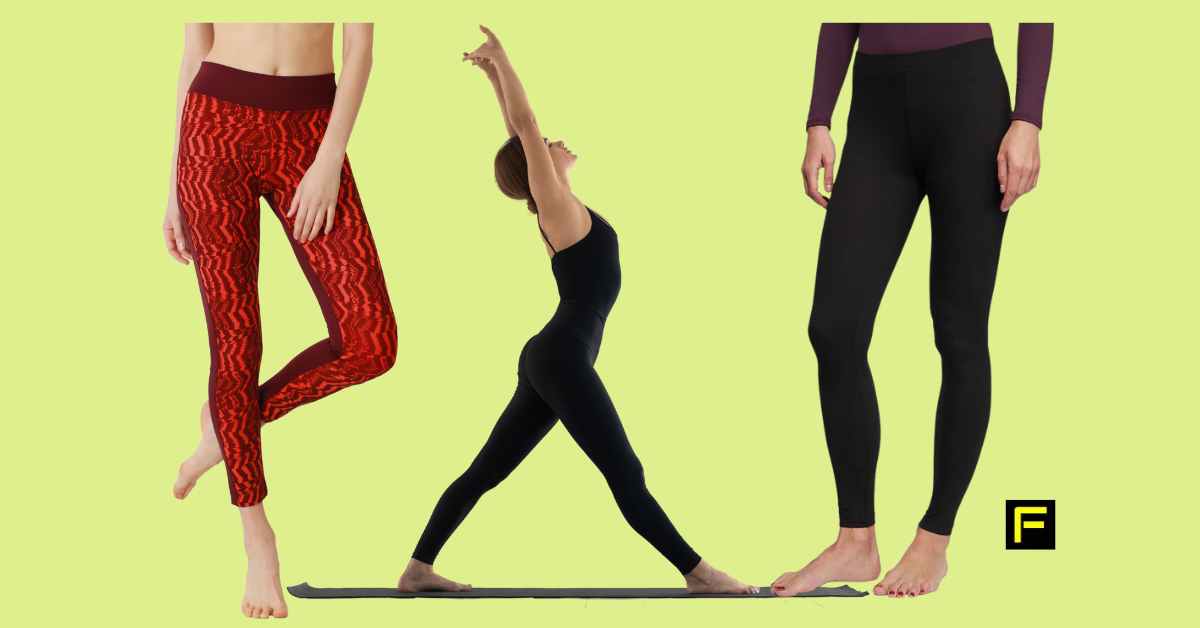Base layer vs compression leggings are two popular types of athletic wear that are designed to provide comfort, support, and protection during physical activity.
While they may seem similar at first glance, there are some key differences between these two types of garments that can affect their performance and suitability for different activities.
Understanding the differences between a base layer vs compression leggings can help athletes and fitness enthusiasts choose the right option for their needs.

Base layers are lightweight, breathable garments designed to wick moisture away from the skin and regulate body temperature.
Key Takeaways
- Base layers are lightweight, breathable garments designed to regulate body temperature and wick moisture away from the skin.
- Compression leggings are tight-fitting garments that provide support and improve circulation during physical activity.
- Understanding the differences between base layer vs compression leggings can help athletes and fitness enthusiasts choose the right option for their needs.
They are worn as a first layer of clothing, underneath other garments, and can be made from a variety of materials, including synthetic fabrics like polyester and nylon, as well as natural fibers like wool and silk.
Compression leggings, on the other hand, are tight-fitting garments. They are engineered to provide support and improve circulation during physical activity.

Compression leggings improve circulation and provide support during activities.
Often made from a blend of synthetic materials like spandex and polyester, they can be worn alone or as a base layer. These leggings are popular among athletes and fitness enthusiasts for their ability to reduce muscle fatigue and soreness and to improve performance. Be sure to check out my recent post on the best leggings to hide cellulite.
Understanding Base Layers

Purpose of Base Layers
Base layers are an essential piece of clothing for any outdoor activity. They are designed to keep the body warm by trapping a thin layer of air between the skin and the fabric. See my latest post on the best cold weather running tights for women for purchasing help.
This layer of air acts as an insulator, preventing heat loss from the body. Base layers also help to wick away moisture from the skin, keeping the body dry and comfortable.
Material Composition
Base layers are made from synthetic materials such as polyester, nylon, or spandex. These materials are lightweight, breathable, and quick-drying, making them ideal for outdoor activities. Some base layers also include natural fibers like merino wool, which provide additional insulation and odor control.

Fit and Comfort
Base layers should fit snugly against the skin without being too tight or restrictive. A good base layer should be comfortable to wear and not cause any irritation or chafing. It should also be able to move with the body without bunching or riding up.
To ensure a proper fit, it’s important to consider the size and shape of your body. Some base layers are designed specifically for men or women, while others are unisex. It’s also important to consider the length of the sleeves and legs, as well as the neckline, to ensure adequate coverage and protection.
Base layers are an essential component of any cold weather activity. They provide warmth, moisture-wicking, and comfort, making them a must-have for anyone who wants to stay comfortable and dry during extreme weather conditions.
Exploring Compression Leggings

Benefits of Compression
Compression leggings are designed to provide a snug fit to promote blood flow and reduce muscle fatigue. This leads to improved performance during workouts and faster recovery times afterward. These leggings help to prevent injury by providing support to the muscles and joints. My recent post on the best fleece-lined leggings can also provide additional insight on this topic.
Material and Fabric Technology
Compression leggings are made from a blend of synthetic materials such as nylon, spandex, and polyester. These materials stretch and conform to the body, while also providing moisture-wicking properties to keep the skin dry and comfortable. Some leggings also feature special fabric technology, such as antimicrobial properties to prevent odor and bacteria buildup.
Design and Fit
These performance leggings come in a variety of designs and styles, ranging from full-length to capri-length and even shorts. They feature different levels of compression.
Some provide a light compression and others offer a more intense compression. It’s important to choose compression leggings that fit snugly but not too tight, and that provide support to the areas of the body that need it most.
These tight-fitting leggings offer a range of benefits for athletes and fitness enthusiasts, including improved performance, faster recovery times, and injury prevention.
Comparative Analysis

Performance Differences
Both base layer and compression leggings are designed to improve athletic performance, but they achieve this goal in different ways.
Base layer leggings are typically made from a blend of synthetic materials that wick moisture away from the body and help regulate temperature.
Compression leggings, on the other hand, are designed to provide targeted support to key muscle groups, which can improve blood flow and reduce muscle fatigue.
In terms of performance, the choice between base layer and compression leggings ultimately depends on the athlete’s needs and preferences.
If you’re looking for all-around comfort and temperature regulation, base layer leggings are the way to go. If you need extra support and improved circulation, compression leggings may be a better choice.
Thermal Properties
When it comes to thermal properties, base layer and compression leggings are fairly similar. Both types of leggings are designed to provide insulation and regulate temperature, which can help keep athletes comfortable in a variety of conditions.
Base layer leggings are better suited for colder temperatures, as they are often thicker and provide more insulation.
Compression leggings are designed to be worn in a wide range of temperatures and can be worn comfortably in both hot and cold weather.
Durability and Quality
Both base layer and compression leggings are designed to be durable and long-lasting, but there are some key differences in terms of quality.
Base layer leggings are made from high-quality synthetic materials able to withstand wear and tear, while compression leggings may be made from a wider range of materials, some of which may be less durable.
In terms of quality, it’s important to choose leggings that are made from high-quality materials and are designed to withstand the rigors of athletic activity.
Look for leggings that are reinforced in key areas, such as the knees and hips, and that are made from materials that are designed to wick moisture away from the body and regulate temperature.
Choosing the Right Option

When it comes to choosing between base layer and compression leggings, there are a few factors to consider. Here are some things to keep in mind:
Comparison Tabe
| Feature | Compression Leggings | Base Layer Leggings |
|---|---|---|
| Primary Purpose | Enhance blood circulation. | Provide warmth and comfort. |
| Support muscle recovery. | ||
| Material Thickness | Generally thicker. | Usually thinner. |
| Compression Level | High compression. | Minimal to no compression. |
| Fit | Tight and snug. | Close-fitting but flexible. |
| Breathability | Varies, often breathable. | Highly breathable. |
| Temperature Regulation | Moderate. | Excellent. |
| Moisture Wicking | Common feature. | Common feature. |
| Typical Use | Sports and high activity. | Layering in cold weather. |
| Recovery after exercise. | ||
| Price Range | Often higher-priced. | Varies, often more affordable. |
Activity Type
The type of activity you’ll be doing is an important consideration when choosing between base layer and compression leggings.
For high-intensity activities like running or cycling, compression leggings can help improve circulation and reduce muscle fatigue.
Base layer leggings are better suited for low-intensity activities like hiking or skiing, where warmth and moisture management are more important than compression.
Weather Conditions
Weather conditions are another important factor to consider when choosing between base layer and compression leggings.
In cold weather, baselayer leggings are the best choice as they provide more insulation and warmth.
Compression leggings are a better option for warmer weather as they are designed to wick away moisture and keep you cool.
Personal Preferences
Personal preferences also play a role in choosing between base layer and compression leggings.
Some people prefer the feeling of compression, while others find it uncomfortable. Similarly, some people prefer the added warmth of baselayer leggings, while others find them too bulky.
It’s important to try on both types of leggings and see which one feels more comfortable and suits your needs best.
Care and Maintenance

Washing Guidelines
To ensure the longevity of both base layer and compression leggings, proper washing is essential. It is recommended to wash them after each use to maintain their elasticity and prevent odor buildup.
When washing, follow the instructions provided by the manufacturer. As a general rule, it is best to wash them in cold water with a mild detergent. Avoid using fabric softeners and bleach, as they can damage the fabric and reduce its effectiveness.
Wash them separately from other clothing items, especially those with zippers or hooks that can snag the fabric.
Air drying is preferred, as the high heat can damage the fabric and cause shrinkage. Instead, hang them to air dry or use a low heat setting in the dryer.
Storage Tips
Proper storage will maintain the quality of both types of leggings. After washing, make sure to dry them thoroughly before storing away.
Fold them neatly and store them in a drawer or on a shelf, away from direct sunlight and heat sources.
Avoid hanging them on hangers, as this can cause stretching and distortion of the fabric. If you must hang them, use a hanger with clips that won’t damage the fabric.
Plastic bags can trap moisture and cause odor buildup. Instead, use breathable fabric or mesh bags to store them.
By following these simple care and maintenance guidelines, you can ensure that your base layer and compression leggings will last for many wears and workouts to come.
Brand and Price Considerations
Popular Brands
When it comes to choosing between base layer and compression leggings, there are several popular brands to consider.
Some of the top brands for base layer leggings include Under Armour, Nike, and Columbia.
They offer a variety of styles and materials to choose from, including moisture-wicking fabrics and thermal insulation.

For compression leggings, popular brands include 2XU, Skins, and CW-X. These brands are known for their tight-fitting, supportive designs that are often used by athletes for performance enhancement and injury prevention.
Price Range
When it comes to price, base-layer leggings tend to be more affordable than compression leggings. Popular brands like Under Armour and Nike offer base layer leggings for as little as $25, while higher-end options from Columbia can cost upwards of $80.
Compression leggings, on the other hand, can be more expensive due to their specialized design and materials. Prices for compression leggings can range from $50 to over $150, depending on the brand and features.
Ultimately, the choice between base layer and compression leggings will depend on personal preference and intended use. While base layer leggings may be more affordable and versatile, compression leggings may offer targeted support and performance benefits for athletes and active individuals.

Claudia Faucher is a full-time fitness training expert and lifestyle blogger. She is also been a certified Les Mills BodyPump instructor for the past 5 years and a fitness instructor for over 20 years. Claudia is a personal trainer and creates fitness training programs for seniors and people of all ages. She likes to use her skills and experiences to help others on their fitness journeys.
Last update on 2025-12-25 / Affiliate links / Images from Amazon Product Advertising API

